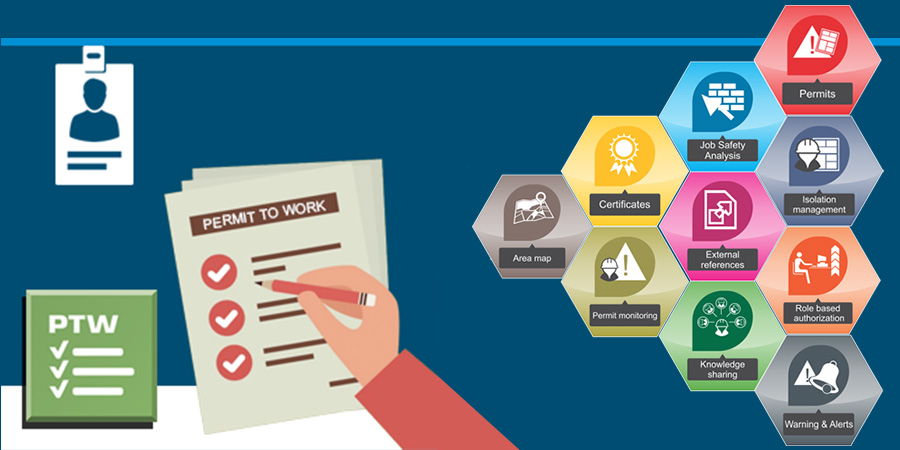Work permit authorizes
- Specific work to be carried out in restricted or hazardous areas.
- Serves as an official written record of conditions and requirements as agreed upon between the persons authorizing and receiving the permit.
- Specifies the conditions and procedures for safe execution of the work and allows the work to be carried out under controlled conditions.
There are three types of work permits.
- Cold work permit (green): Shall be obtained for all general works of maintenance and radiography. Eg. Opening of process machinery etc.
- Hot work / Vehicle entry permit (Red): A hot work/vehicle entry permit is required for the use of local source of ignition capable of igniting flammable gases, liquids or any other material. Eg, Welding, or entry of petrol/diesel driven vehicles or equipment in a hazardous area, etc.
- Confined space entry Permit (yellow): A Confined space is any space large enough for a man to enter and where there could be presence of dangerous gas or fuel, there is likelihood of deficiency of oxygen, or access or egress is difficult or restricted. Eg. Vessels, tanks, furnaces, pits, telephone manholes, sewers, excavations deeper than 1.2 meters, floating roof tanks when roofs are more than 3m down from the top, etc.
Excavation Authorization:
- Within a restricted area, an Excavation authorization is required for all excavations regardless of depth. For excavations outside restricted areas, excavation authorization is required for excavations deeper than half meter.
- The maximum validity of authorization shall not exceed one month (can be renewed two times) and it shall be obtained at least 3 days before commencement of work.
- A cold work permit is required if hand tools are being used for excavation and a hot work permit if powered tools or mechanical equipment are being used.
- For Excavations 1200 mm deep or more, a confined space entry permit is required, the gas test shall be done as per entry permit requirements.
Gas Concentration limits for work permit
Cold work
- LEL – Less than 10% (up to 20% with air mask)
- H2S – Less than 10 ppm (should wear SCBA or airline mask at higher concentrations.
Hot Work
- LEL – Not to exceed 1 %, preferably 0%
- H2S – Not to exceed 10 ppm
Confined space entry
- Oxygen – 19.5 to 23.5%
- LEL – Less than 10% (up to 20% with air mask)
- H2S – Below 10 ppm (above 10 ppm, entrants should wear Breathing apparatus, above 100 ppm, entry shall not be allowed.
- Other toxic gases – Reading shall be below TLV for entry without air mask (eg. CO – 25 ppm, Cl2 – 0.5 ppm, SO2 – 2 ppm, NH3 – 25 ppm.) No entry even with BA if LEL is more than 20%, H2S is more than 100 ppm and CO is more than 500 ppm.

Post a Comment